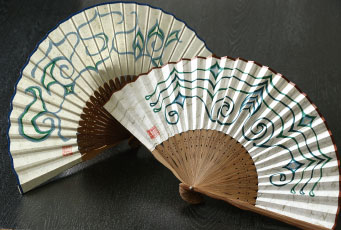
-
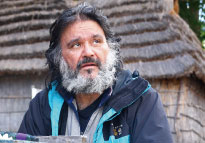
Woodcarver
AKIBE Hideo
-

Woodcarver
USHIJIMA Takahiro
-
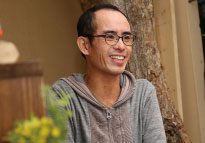
Woodcarver
OKADA Minoru
-
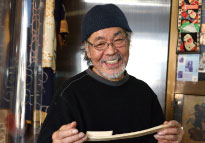
Woodcarver
MORITA Kaoru
-
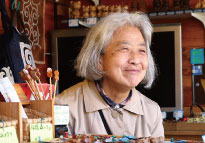
Embroiderer
NISHIDA Kayoko
-
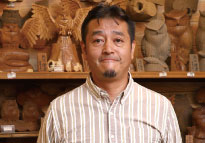
Woodcarver
SHITOMI Yasuhiro
-
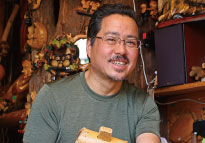
Woodcarver
WATANABE Sumio
-
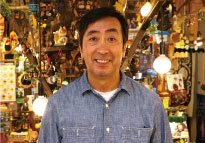
Woodcarver
SAITO Masaki
-

Woodcarver
HIKAWA Kiyoshi
-
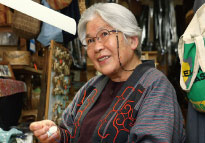
Embroiderer
HIKAWA Yasuko
-
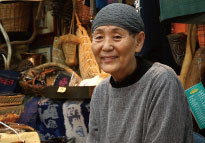
Embroiderer
KOBAYASHI Keiko
-

Embroiderer
NAKAGAWA Yuko
-
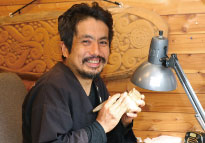
Woodcarver
HARA Yoshiki
-
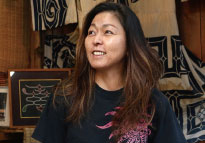
Embroiderer
KATSUYA Erika
-
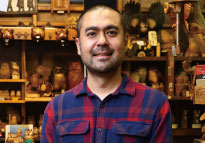
Woodcarver
FUJITO Kouhei
-

Woodcarver and
theater directorTOKO Shusei
-
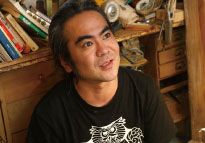
Woodcarver
TAKIGUCHI Kengo
-
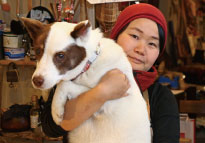
Painter
INOUE Ayako
-
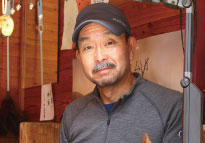
Woodcarver
HIRAMA Satoru
-

Woodcarver
TAIRA Hideharu
-

Woodcarver
YANASE Hideo
-
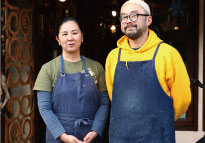
Ainu Food
GOUKON Yoshifuru
-
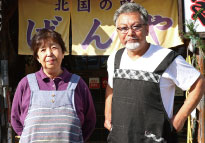
Cuisine
MATSUDA Kenji
-

Creator and
Ainu culture advisorHIRONO Hiroshi
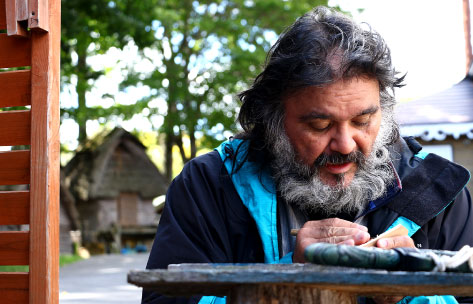

01
Woodcarver
AKIBE Hideo
Profile
From Lake Akan, he learned wood carving from his father after graduating high school, and after 4 years opened his own store "Nukanno" at the rear entrance of the store his father ran. Later, he inherited the store and managed it as the current "Debo no Mise" while also acting and producing Ainu dances.
Mr. Debo's korpokkur are distinct for their "smiles." Korpokkur, the "gods who live under butterbur," are mischievous, but help the Ainu in times of need. These are made with the hopes that they will bring happiness and make everyone smile.
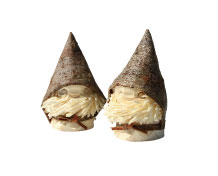

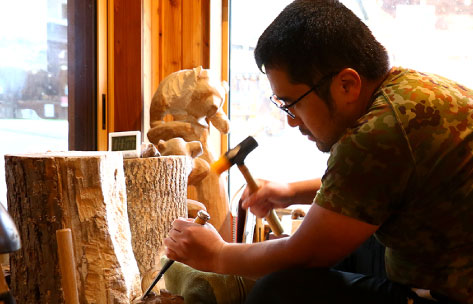

02
Woodcarver
USHIJIMA Takahiro
Profile
From Nagasaki Prefecture. He joined the Japan Self-Defense Forces and came to Hokkaido, but moved to Lake Akan to do wood carving fully-fledged, something he had liked from the beginning. His wood carving is mostly self-taught and he focuses on brown bears, although he
Mr. Ushijima, who likes dinosaurs, makes a Dunkleosteus, a placoderm (jawed fish) that is thought to have reigned at the summit of the late Devonian marine ecosystem 400 million years ago. Fans of dinosaurs will want to see for themselves the intensity of the actual work.
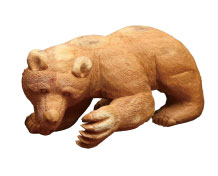
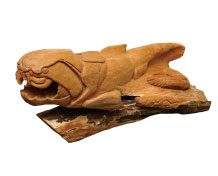


02
Woodcarver
OKADA Minoru
Profile
From Kyoto Prefecture. Admiring Hokkaido, he attended university in Iwamizawa. After that, he moved to Lake Akan where nature was abundant and the environment allowed wood carving. He became independent 10 years ago and has been creating works with Ainu patterns and his favorite animals as motifs.
The wall-mounted clocks are carved from a single board with Yezo sika deer or repun-kamuy (orca) and Ainu patterns. The backgrounds and hands of the clock are also elaborately crafted and the designs are eye-catching, making them recommended gifts as well.

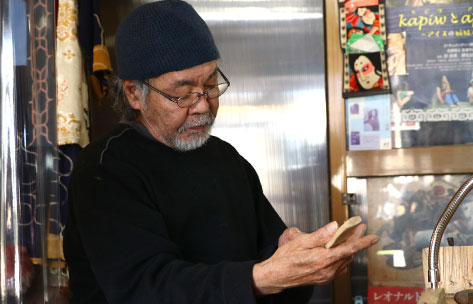

04
Woodcarver
MORITA Kaoru
Profile
From Lake Kussharo, he started training in wood carving at 15 to get himself a job but seriously pursued being a craftsman at 18. He continues to create works with the credo, "Ainu Neno an Ainu (Human-like Human)."
Ikupasuy used when offering sake to kamuy (gods) during Ainu rites. Mr. Morita makes iku-pasuy with three-dimensional carvings of various motifs characteristic of the Ainu people, each work giving a sense of story.


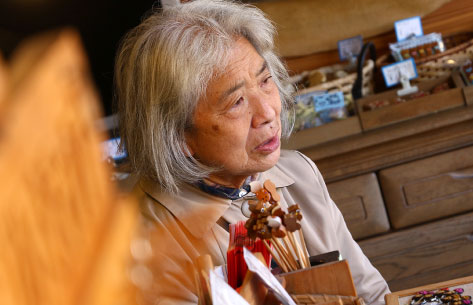

05
Embroiderer
NISHIDA Kayoko
Profile
From Tanno Town, Kitami. She found a job at Lake Akan, married the current shop owner, and encountered Ainu embroidery. While helping out with making products in the store, she studies Ainu patterns and concentrates her efforts on cultural preservation activities such as restoring kimonos using old methods.
The Ainu patterns, which Mrs. Nishida says "a story comes to mind when I'm designing, has many fans, enough for her to release a collection of her works. The embroidery, sewn one by one, is awe-inducingly delicate and captures the hearts of its viewer. The actual works are definitely a must-see.

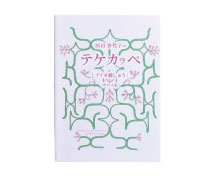

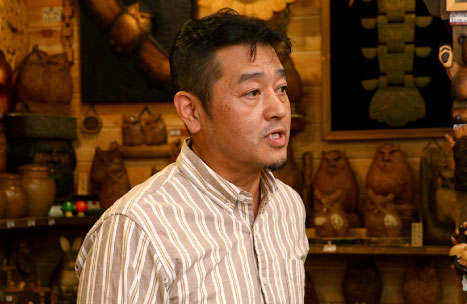

06
Woodcarver
SHITOMI Yasuhiro
Profile
The 3rd generation of the first store that opened in the Ainu Kotan in 1954. He modifies the wood carvings that have been around since his grandfather's generation and turns them into original works. He is particular about bear wood carvings and has collected many works by various artists.
This hand mirror elaborately carved with Ainu patterns features vivid hues, combining red with blue and green, colors that ward off evil spirits.

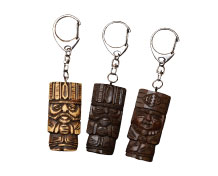
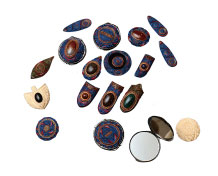


07
Woodcarver
WATANABE Sumio
Profile
From Tochigi Prefecture. After visiting Hokkaido multiple times, he gained interest in wood carving, trained in the Ainu Kotan and Tsubetsu Town, and from 1994 started the shop "Mori no Hito" with friends. He opened Nitayunkuru (people of the forest in the Anu language) in 2016.
Determining the shape of the wood is vital to carving an owl with its wings spread. As the thickness of the wood also affects large works, it is hard to achieve balance.

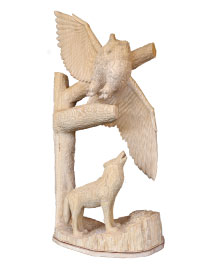


08
Woodcarver
SAITO Masaki
Profile
From Akita Prefecture. He visited Lake Akan at the age of 20 and began wood carving training while working at the Ainu Kotan. After training for eight years, he opened his own store at the current location where a branch of the store he trained in used to be and is working on designing original products.
The keyholder, designed like the traditional stringed instrument "tonkori"; which has been passed down amongst the Ainu people; and decorated with Ainu patterns, was designed by Mr. Saito because there were few souvenirs shaped like tonkori. The vibrant colors of the items attract the eyes.
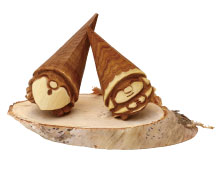
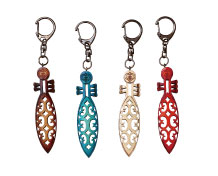
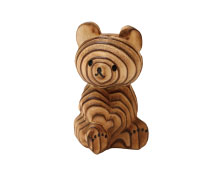
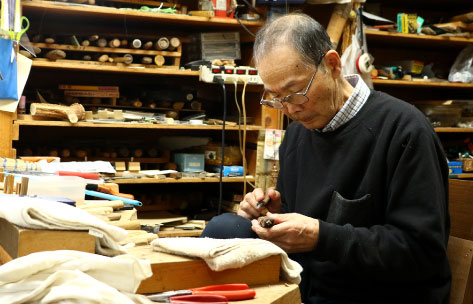

10
Woodcarver
HIKAWA Kiyoshi
Profile
Moved to Akanko Onsen in his early childhood. After graduating from junior high school, he trained in wood carving for four years and became an independent woodcarver. For a long time, he created bear wood carvings; however, he began to carve makiri with Ainu patterns and tumsi carvings, and continues to do so until the present day. He has many fans even outside of Hokkaido and abroad.
The tumsi carving, so popular that some people visit the Ainu Kotan just to purchase Mr. Hikawa's works, is an artwork made by carving a single piece of wood into several motifs connected by rings. He hoped for people to carry it around as a good luck charm, he states.


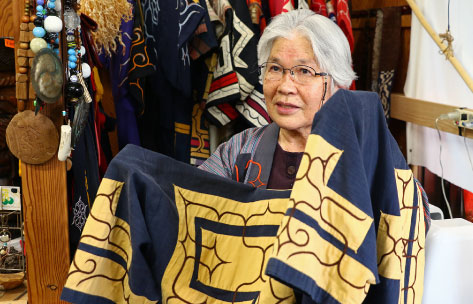

10
Embroiderer
HIKAWA Yasuko
Profile
From Tsubetsu Town. After getting married, she began helping out at the Hikawa Mingeiten and making Ainu embroidery. She learned from the works of her family and the people around her and began to create original patterns. According to her, she still habitually uses the first kimono she made herself 35 years ago.
Each Ainu pattern has a meaning; putting them together creates a talisman that protects the wearer. This matampus is a valuable piece of garment to protect the head. Mrs. Hikawa's colorful embroidery work is brilliant and brightens the heart.
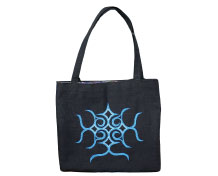
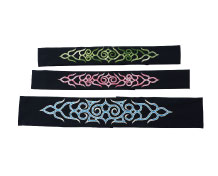
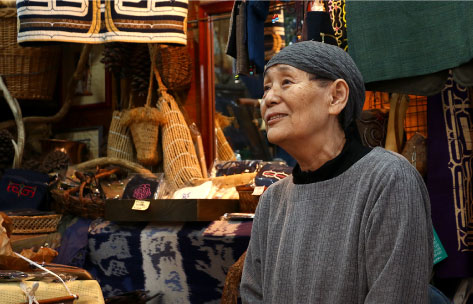

11
Embroiderer
KOBAYASHI Keiko
Profile
From Hiroshima Prefecture. Thanks to a trip to Hokkaido, she got married and moved to the Ainu Kotan. While making her own embroidery works, she also puts her efforts into cultural inheritance. As is her wish to create impactful and stylish works, her creations feature a unique use of colors.
All her works, made with the desire to express Ainu patterns stylishly, are charming. Characterized by the unique use of colors, there is a wide variety of combinations with patterns and colors, making it fun to search for the ones that will suit your taste.
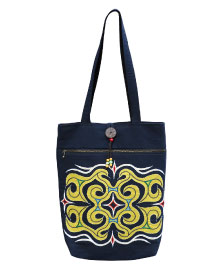
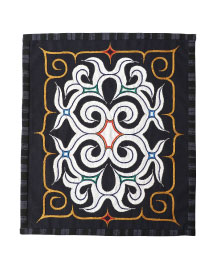
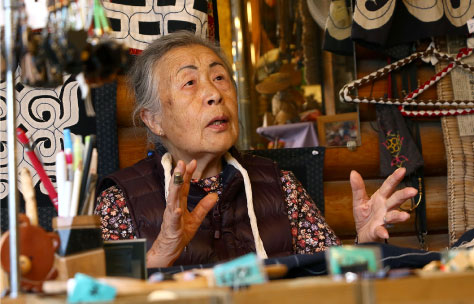

12
Embroiderer
NAKAGAWA Yuko
Profile
From Mori Town in Southern Hokkaido. She was a hairdresser in Tokyo and visited Lake Akan at the invitation of her woodcarver older brother, where she met her husband and got married. She learned embroidery while helping out at the store. Some fans love Mrs. Nakagawa's works for their healing effect.
The pattern on the kimonos made by Mrs. Nakagawa is called ruunpe, an elaborate pattern drawn by folding and bending a belt of white cloth on deep blue cloth as if to make a path. It has been used as fine clothing for ceremonies since old times.

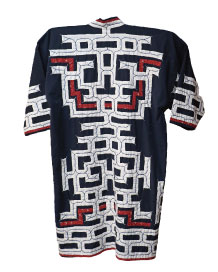
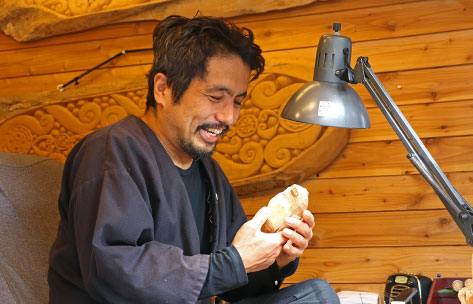

13
Woodcarver
HARA Yoshiki
Profile
From Nara Prefecture. After coming to work part-time at a hotel on the shores of Lake Akan, he was charmed by Akan's nature and woodcarving and began training. At the workbench in the storefront, he carves owls, the figure he creates as his life work, right in front of people for the pleasure of tourists.
The owls he makes, which make use of the Japanese pagoda wood's white exterior and brown core, all sport lovely expressions. As the size he makes depends on the size of the wood, owls made from thin Japanese pagoda wood can be as small as a grain of rice.
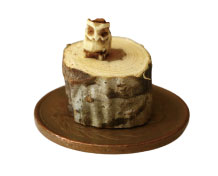



14
Embroiderer
KATSUYA Erika
Profile
Born in Lake Akan. Her grandmother and mother were also embroiderers, and she learned from her mother and started full-fledged work from her 19th year. She also focuses her efforts on Ainu culture and tradition and teaches Ainu dance and mukkuri performance aside from Ainu pattern embroidery.
The embroidery made using both fabric and threads of unique colors makes for very creative and delicate work as in the saying, "Even if you draw a pattern before embroidering, once you start making it, the needle and thread move your hands as they advance."
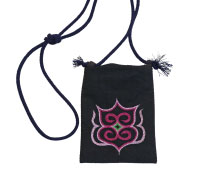
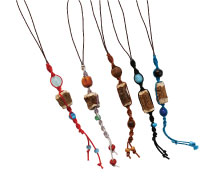

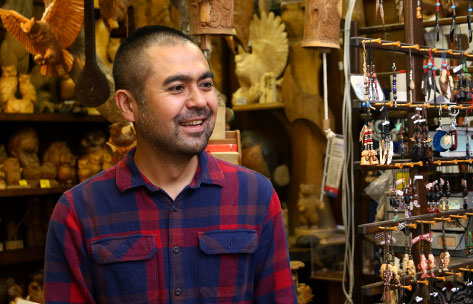

15
Woodcarver
FUJITO Kouhei
Profile
From the Ainu Kotan. After graduating from high school in Sapporo, he went to work in Tokyo but returned to Lake Akan to inherit the shop of his father, a woodcarver. From the start, he had an interest in creating things, and he started wood carving himself, even designing original goods for the store.
Abundant with woodcarving works you can only find at Kumanoya, as well as souvenir-perfect goods such as original design stickers and drinking glasses, and bandanas and socks with Ainu patterns. Be sure to have a look at the "Fujito Ainu Museum" underground as well.

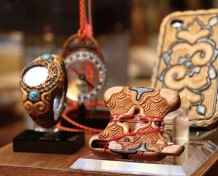
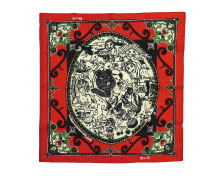
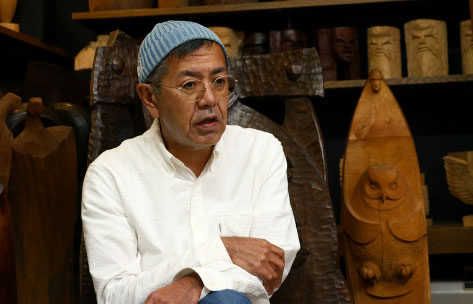

16
Woodcarver and theater director
TOKO Shusei
Profile
From Lake Akan. After graduating from a design school in Sapporo, he found a job in Tokyo. He returned to the Ainu Kotan at 25 and studied Ainu traditional culture. He works as the stage director for the Lake Akan Ainu Theater Ikor, performing the digitally infused musical programs "Lost Kamuy" and "KAMUY LUMINA."
"Ita" is a platter used by the Ainu people. Many people display it as an artwork because of the elaborate Ainu pattern carved on it; however, according to Mr. Toko, "It is finished with lacquer so that it can be used every day, so I would like people to use it more and more for everyday use."
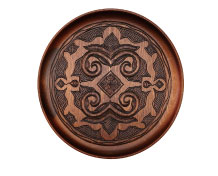

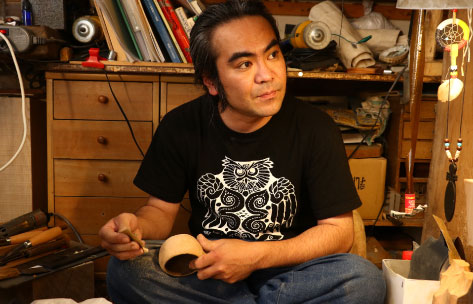

17
Woodcarver
TAKIGUCHI Kengo
Profile
From Lake Akan. He encountered bird carving while studying abroad at a high school in Adelaide, Australia, and started carving wood. Returning to Japan, he did dairy farming, but in 2017, he inherited his father's shop after his death and has since been active as a woodcarver in the Ainu Kotan.
He usually makes works as part of collaborative projects with select shops and businesses, but these are works willingly made as he felt it. Although the patterns are geometric, the colors and design give a warm feeling.
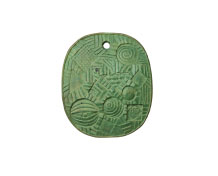
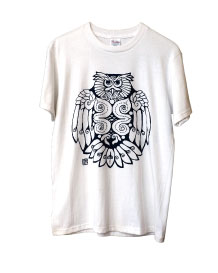
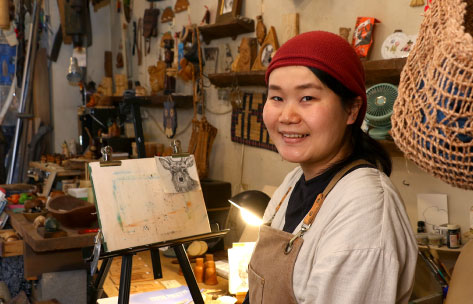

17
Painter
INOUE Ayako
Profile
From Hiroshima Prefecture. She studied painting at an art university. She traveled around Hokkaido after graduating from college, where she saw the works of her predecessor Masamitsu Takiguchi, inspiring her to visit Ichinge no Mise. At present, she runs the shop with Kengo Takiguchi and also participates in Ainu ancient ritual dance at the Lake Akan Ainu Theater Ikor.
One-of-a-kind tote bags, not printed but hand-painted with motifs such as Akan's animals and Ainu women. They may resemble a sketch in style, but the illustrations of the animals with their lively expressions will make you want to buy one as a gift for yourself.
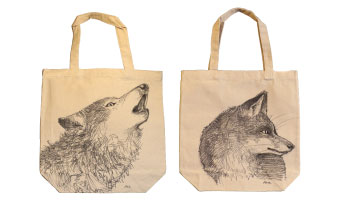
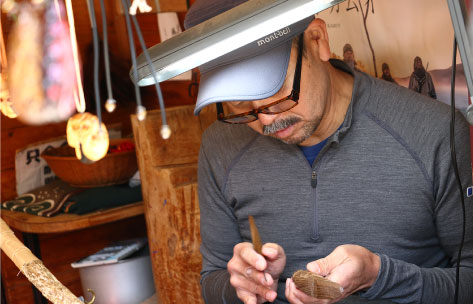

20
Woodcarver
HIRAMA Satoru
Profile
From Ibaraki Prefecture. He visited Hokkaido on a motorbike trip, felt enchanted by the Ainu Kotan, and moved here at 21. He was fascinated by the reliefs of the profile of Ainu women (menoko) and began training in wood carving. He is renowned for his elaborate carving and unique use of colors. His hobby is mountaineering.
A makiri (small knife) that amazes with its highly elaborate carving. Taking a closer look will leave you in awe at the precision of the patterns. It is said to be an interpretation of old Ainu patterns and is designed to have a flowing movement. This is definitely one work to take in your hands and view.

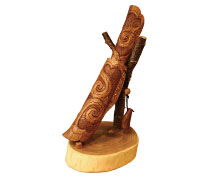


22
Woodcarver
TAIRA Hideharu
Profile
From Kyoto Prefecture. He has loved art from the start and is said to have carved the Statue of Liberty from the wood of a telephone pole back in high school. Charmed by Hokkaido's wood carving, he moved to the Ainu Kotan to study wood carving. He only began carving Ainu patterns recently but is highly recognized.
Makiri is characterized by fine lines and intricate scale carvings pefect for the expression, "delicate beauty." Because of that beauty, it is highly evaluated even by women. There are several types and sizes of wood used, and you can choose which one you like.
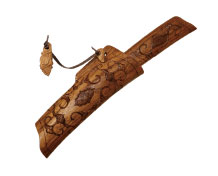
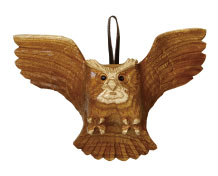


22
Woodcarver
YANASE Hideo
Profile
From Tokyo. When he was thinking of going to Hokkaido or Okinawa, he found a part-time job opening at Lake Akan and applied. While selling wood carvings, he thought of make them himself and started training. He continues to make works centered around owls.
All of Mr. Yanase's owls sport a gentle expression. He hopes to draw the feeling of kindness in his works.
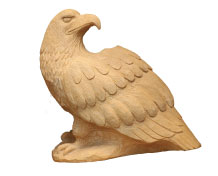
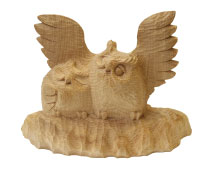
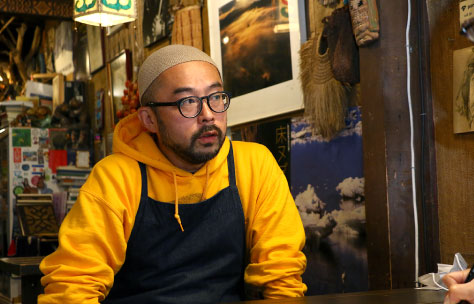

19
Ainu Food
GOUKON Yoshifuru
Profile
From Iwate Prefecture. He met his wife Fukiko while traveling and got married. With his wife, he manages the shop Poronno, opened by Fukiko's father. At the request of customers, the shop that was a light meal cafe now mainly serves meals and offers a variety of Ainu dishes.
While following concepts and basics of Ainu cuisine that have been passed down from the past, Mr. Goukon expressed wanting to offer dishes that suit the modern age and create new things without forgetting respect for nature.

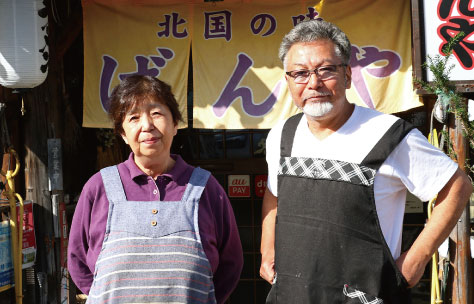

21
Cuisine
MATSUDA Kenji
Profile
From Shiranuka Town. He worked in Sapporo after graduating from high school, but came to Lake Akan where his parents lived and managed light meal cafes and lodgings for bikers and cyclists. He rebuilt the site where his parents used to run a wood carving shop into the current location and started a restaurant 26 years ago.
He allegedly changed the name of the restaurant to "Banya (fisherman's lodging)" because he grew up in a fisherman's town in Shiranuka Town. Their most popular item is the tenderly cooked "Yezo sika deer set meal," Akan's Yezo sika deer meat with salads and small dishes, and the menu delights even those trying Yezo sika deer meat for the first time.

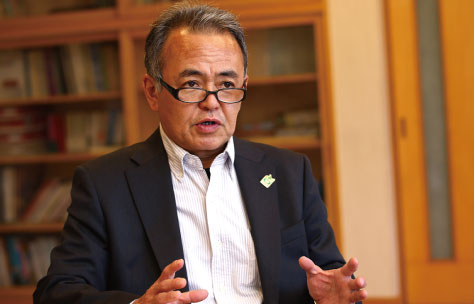

09
Creator and Ainu culture advisor
HIRONO Hiroshi
Profile
From Kushiro City, he moved to Lake Akan where his mother's family is. Graduating from high school, he got a job in Shintoku Town and went to Tokyo after that. After helping build an Ainu restaurant in Tokyo, his thoughts leaned towards the inheritance of Ainu culture, and he returned to Lake Akan.
After becoming a dancer of Ainu ancient ritual dance, he did activities for the inheritance of the Ainu culture while running operations for the continuance of the Ainu Kotan and Ainu Theater. In 2019, he established the Akan Ainu Consuln intending to spread Ainu culture and protect intellectual property rights, and he now serves as its chairman.
